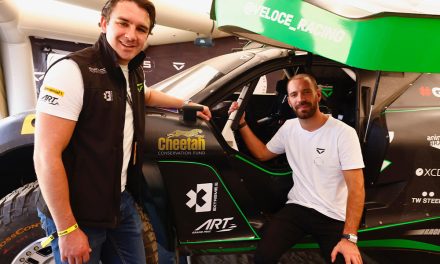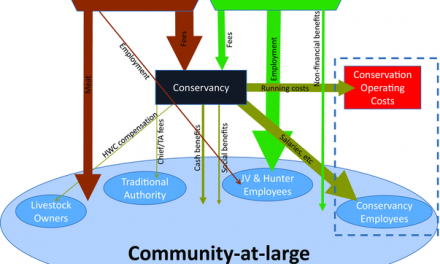
Rhino Trust challenges Namibian companies to adopt wild rhinos

It costs around N$25,000 per year per animal to protect black rhinoceros in the wild. To protect the entire population in the Kunene Region runs into millions per year. These costs are carried mostly by the Ministry of Environment and Tourism in partnership with private conservation agencies.
The Save the Rhino Trust came up with an ingenious idea to help cover their enormous operating costs. Named the Adopt a Rhino programme, the Trust identifies individual young rhinos and put these up for adoption by companies. One such rhino, a 4-year old male by the name of Nawalta has become the foster child of the Swaco Group of Companies.
This week the group announced they are continuing their long-standing support of the Save the Rhino Trust. Their latest contribution comprises N$23,500 to cover Nawalta’s protection costs as their company foster child, and another N$10,000 to help the trust build capacity.
The black rhino population of the Kunene Region is truly unique. Many of the animals occur outside formally protected areas in the former Kaokoveld and Damaraland. This poses unique conservation problems, most of which are taken care of by the trust through their more than 30 years experience in the field. The Trust roams over hundreds of thousands of square kilometres to monitor the rhino population, spread very thinly through this vast expanse.
Swaco’s symbolic adoption of Nawalta covers the cost of monitoring and protecting him through individual identification for the next year. Maxi Louis, the Save the Rhino Trust’s Chairperson, expressed her gratitude for the contribution and challenged other companies to join the fight to help secure the future of wild rhinos.
The past twelve months have been hectic in Nawalta’s life. June last year, he was immobilised by a ministry team to remove his horn. This renders him valueless to poachers, consequently he is less likely to be killed. He was also given an ear notch to make it easier to identify him in the wild, The Save the Rhino Trust whose guards track the rhinos over vast areas use these markings to identify individual animals from afar to avoid any disturbance to the animals.
Nawalta’s mother, Nigeria gave birth to a new calf early this year which forced the sibling, shortly after turning four, to start a new life on his own. When he was observed recently, it was reported that he is in excellent condition.
The Save the Rhino Trust said wild rhinos can be adopted by an individual, a family, a group of friends, a school or a business.












































